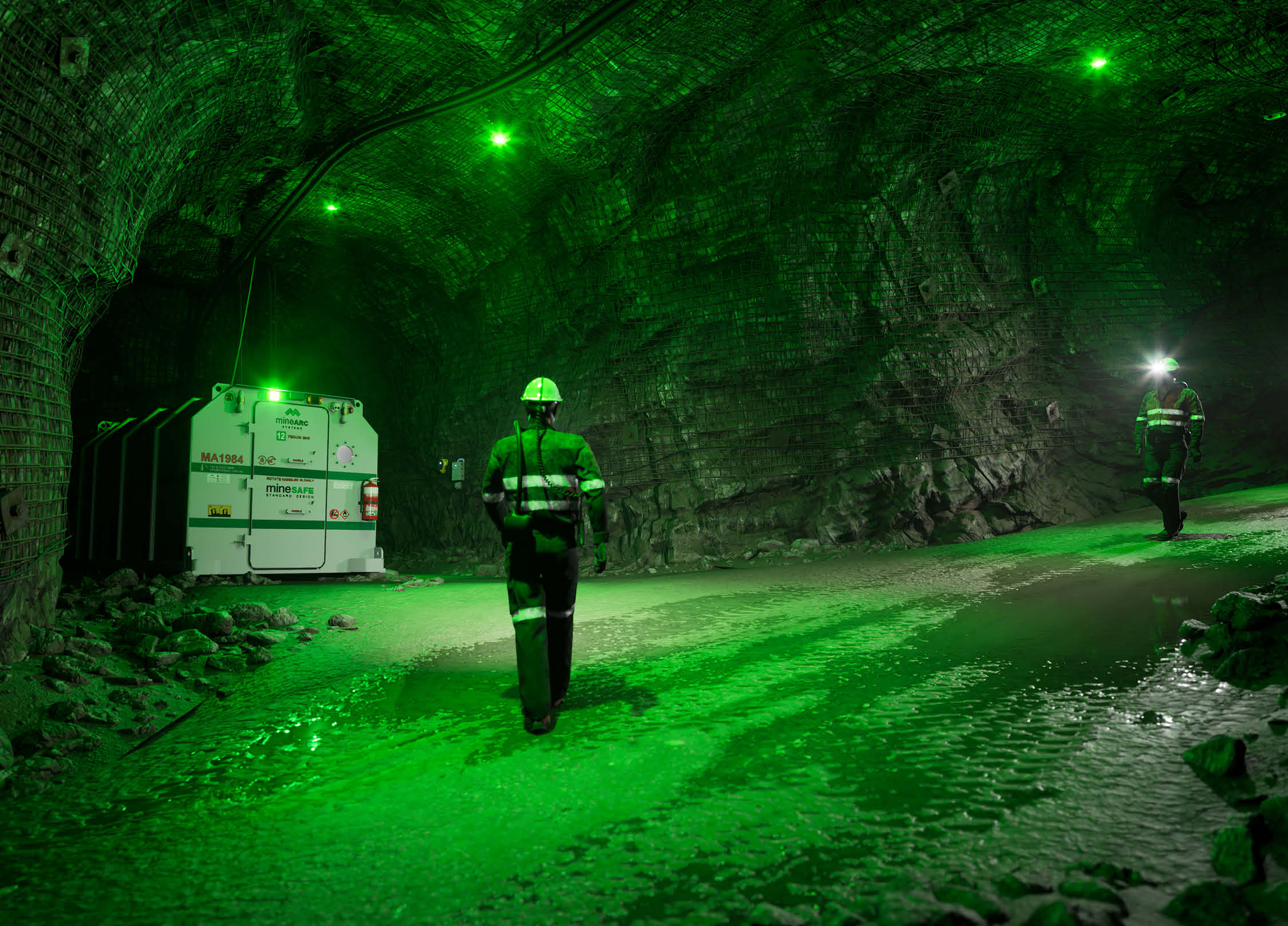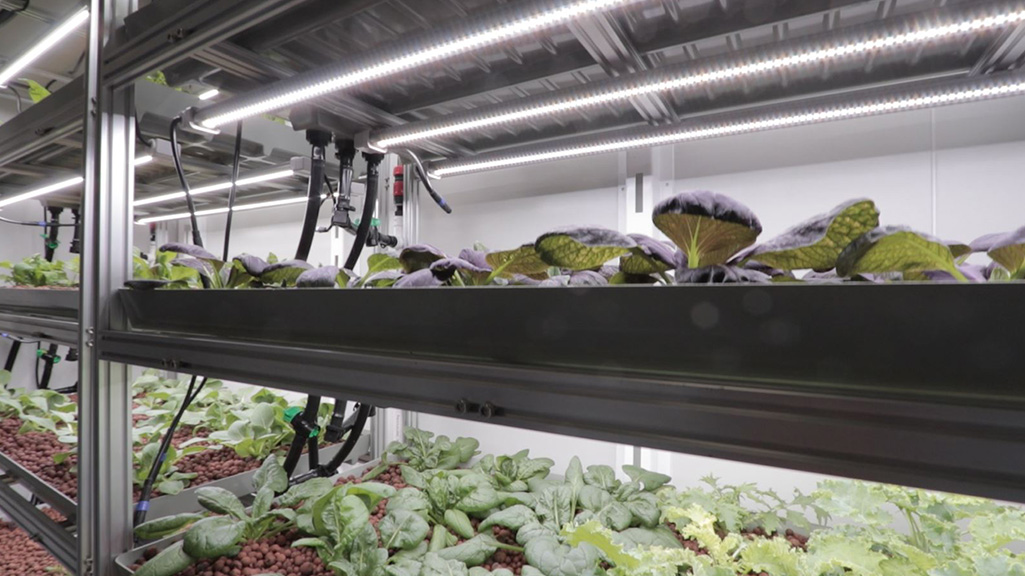Every quality refuge chamber for sale or hire is equipped to operate in stand-alone mode. In other words, the components within the shelter will continue to work if cut from its external supply of power and air.
This mode ensures occupants are kept safe and alive while allowing enough time for the individuals to be rescued or for the hazard to pass.

Why Refuge Chambers Need Back-up?
During an emergency, air and power lines to a refuge bay can be severed or contaminated, impacting the chamber’s ability to function. Without redundancies, the emergency shelter would no longer be effective or safe.
It is common for an emergency refuge to go into stand-alone mode. The scenario below is one example of how this can occur.
A truck fire has occurred at a refuelling station, and the emergency response plan has been activated. Those who are unable to exit the mine, retreat to the nearest underground refuge chamber.
As the fire continues, it has caused the main air line to be damaged. This compressed air line is providing fresh, breathable air to those sheltering within the sealed refuge chamber. Because of the damage smoke is pulled through the air line, and drawn into the sealed refuge. As a result, the air cannot escape, smoke levels rise, and oxygen levels fall, causing serious harm.
Shutting off the compressed air supply would stop contaminated air from entering. But oxygen levels would continue to decrease. As occupants breathe the air, they use up the oxygen and exhale carbon monoxide and carbon dioxide.
Maintaining liveable oxygen levels is the reason why a secondary air supply is required for an emergency refuge chamber in stand-alone mode. Without a backup supply to replenish the lost oxygen, the shelter would become unsafe.
A reserve supply of O2, alongside the CO and CO2 Scrubber, allows the contaminated air line to be shut off, and the oxygen cylinders turned on to let occupants breathe safely.
A spike in methane gas has triggered emergency response procedures, and all personnel are required to shelter in the nearest refuge chamber.
During the hazard, power has been lost to a section of the tunnel where the refuge chamber is located. As the systems within the chamber need power to sustain the individuals taking refuge, a back-up supply is required to allow these to operate independently.
An uninterruptible power supply, known as a UPS, is installed if mains power fails. The UPS provides a limited source of energy to maintain a liveable environment, as it is a TunnelSAFE Refuge Chamber this is set to the standard 24 hours. These battery reserves ensure essential systems such as the scrubber system, air conditioner, and lights stay on until rescue or the emergency subsides.
Without redundancies, emergency shelters would no longer be effective or safe.
Stand-Alone Mode: Understanding Refuge Chambers Tweet
Stand-Alone Mode Requirements for Emergency Refuge Chambers
Refuge chamber guidelines outline strict requirements for stand-alone mode, five key areas include:
- Emergency battery supply to refuge chambers
- Secondary air source: breathable air, positive pressure
- Water supply
- Temperature and humidity control within the refuge bay
- Refuge chamber duration
During day-to-day operations, refuge chambers are connected to the main power supply. Many systems use power, including chemical scrubber, lighting, and air conditioning. These systems are critical to keeping individuals alive while taking shelter. If a refuge chamber is no longer externally supported, a substitute power supply is essential. Installing emergency batteries provide back-up support to the refuge.
Emergency refuge chamber batteries provide the necessary energy to keep a refuge bay self-sustained before rescue. MineARC uses AGM (absorbed glass mat) batteries that have been thoroughly tested in conjunction with the refuge chamber. Generally, each bank is a standard 36 hours for hard rock mining and 24 hours for tunnelling; however, the duration is customisable.
It is critical that the battery bank of a refuge chamber is maintained and uses OEM equipment. If the emergency refuge chamber batteries have depleted or developed a fault, it risks the lives of everyone who uses the chamber.
Batteries are stored outside of the sealed chamber within either an integrated compartment or a stand-alone uninterrupted power supply (UPS). Isolation minimises the potential for explosions, fires or exposure to fumes.
A compressed air line is connected to the refuge bay to replenish the oxygen levels within the shelter and maintain positive pressure. The risk of a cut air line or contamination requires replacement sources.
Understanding Breathable Air in a Refuge Chamber
Two things must occur to maintain a breathable atmosphere:
Fresh Oxygen Supply
Oxygen cylinders, stored within the chamber, provide a secondary supply of oxygen. The volume must be sufficient to supply enough O2 for
- the maximum occupancy,
- over the maximum duration,
- with a consumption rate of 0.5 litres per minute per person.
An oxygen candle can be used as a third backup air supply.
Removal of excess Carbon Monoxide and Carbon Dioxide
A chemical scrubber system works to remove CO and CO2 through a chemical reaction. The scrubber system draws in air which passes through chemicals and recycled back into the chamber. As the air is processed, it reacts with the chemicals within cartridges or trays to remove harmful gases.
Traditionally, chemical scrubbers use a type of soda-lime to lock onto CO2 molecules.
The overall balanced equation is:
H2O/ NaOH
CO2 + Ca (OH)2 → CaCO3 + H2O + heat (in the presence of water)
Carbon monoxide is removed via catalytic oxidation, producing less harmful CO2.
The overall balanced equation is:
CO + O2 = CO2
Understanding Positive Pressure in a Refuge Chamber
Positive pressure helps to stop contaminants in the air from entering the emergency refuge chamber. Positive levels occur when there is a higher pressure inside the shelter compared to the outside atmosphere.
In a refuge bay, compressed air is fed into the chamber until the internal pressure reaches 200 Pascals (Pa). Pressure levels are controlled by the check valves, which open if the pressure inside the chamber exceeds 250Pa. Too much positive pressure will prevent the chamber door from opening, or risk damaging the shelter.
In stand-alone mode, an emergency shelter still needs to maintain positive pressure. The release of air from compressed air cylinders will achieve adequate pressure.
The amount of air required to reach positive pressure is determined by internal chamber volume and the relationship between the internal and external atmospheric temperatures.
All emergency refuge chambers need to contain a supply of potable aka drinking water. Water is fundamental to life; it is recommended that 4.5 litres per person is an adequate supply for a safe refuge with 36 hours duration. Longer duration refuge chambers should consider increasing the amount.
Inside a sealed environment, heat and humidity can quickly build to dangerous levels. Our body functions and external conditions affect how this rises. Too high temperatures and humidity causes heat stress and can be fatal.
Removing heat and keeping the chamber within a liveable temperature requires an air conditioner. Robust air conditioners, suitable for underground and rugged environments are required on all emergency refuge chambers. Refrigerated air conditioners also rely on the backup power supply to maintain operations in stand-alone mode.
The stand-alone period for a refuge chamber is finite. The duration can extend from 24 to 96 hours, depending on the industry, local safety regulations or refuge chamber guidelines, and company requirements.
Refuge chamber duration considers the time it takes for a rescue to be completed or a hazard removed and allows for an additional safety margin.
Components within the refuge chamber must maintain self-sustained operation for a uniform period. For example, if the chamber is 36 hours;
- The refuge chamber battery bank must have adequate resources for full power use for 36 hours
- Secondary oxygen cylinders need to have the capacity to supply air to the maximum capacity of individuals, at an average consumption rate, and preserve positive pressure for the 36 hours
What if a Refuge Bay Doesn’t Have Stand-Alone Mode?
If a refuge chamber is built without adequate stand-alone measures or lacked the required servicing, its life-saving capabilities are severely impacted.
Below is a summary of key refuge chamber features and how they are impacted if back-up systems are not available, and the outcomes.
| Refuge Chamber Features | Standard Supply | Without Stand-Alone Measures | Outcome |
| Power | Connected to an external power supply | Refuge chamber components that require power cannot operate, including air conditioner, scrubber, gas monitor, lights and sirens | The refuge chamber becomes unusable. The chamber interior will heat, carbon dioxide and carbon monoxide levels rise. Potentially fatal to occupants within the chamber |
| Oxygen Supply | Compressed air line | No oxygen supply to the refuge chamber | Occupants would breathe recycled air from within the shelter. Oxygen levels decrease, carbon dioxide and carbon monoxide levels increase. Severe health impact, toxicity poisoning to suffocation |
| Positive Pressure | Compressed air line | Pressure levels plateau | Harmful and toxic gases from outside enter the chamber |
| Temperature Control | Air conditioner, run by an external power supply | Stops cooling the refuge chamber | The internal temperature increases, this is a significant health hazard causing heat stress or fatality |
| Water | Long-life water | No water | Dehydration |
Emergency refuge chambers have three modes in which they operate; stand-by, externally-supported and stand-alone.
Stand-alone mode occurs when a refuge chamber is being used in an emergency and is no longer supported by external utilities. Preparing and maintaining an emergency shelter with the capacity to operate independently for a set period, ensure occupants have all the means to survive.






